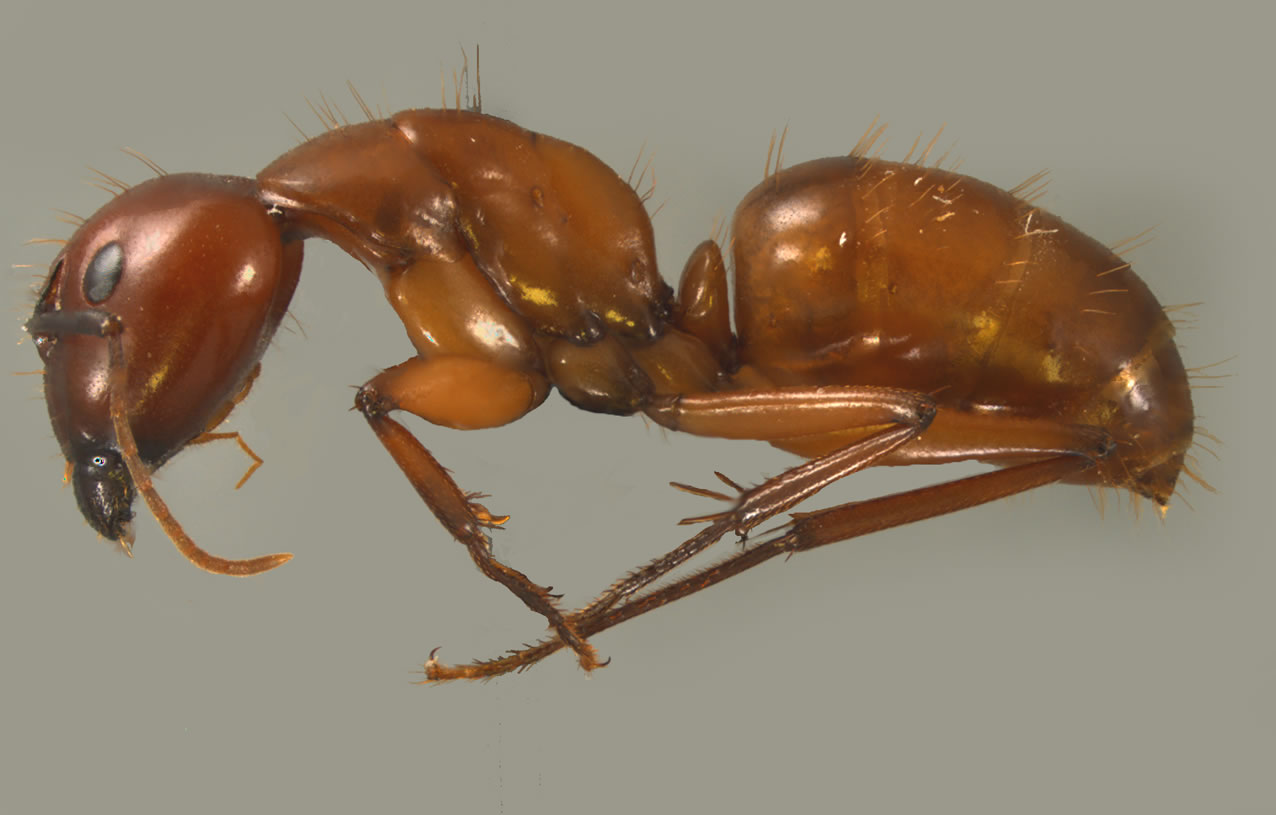Subfamily FORMICINAE |
|
Camponotus castaneus, full face view of major. Notice the lack of erect hairs on the gena (compare to C. americanus). (click image to enlarge) |
Camponotus castaneus, profile view of major worker (click image to enlarge) |
Camponotus castaneus, profile view of male (click image to enlarge) |
Camponotus castaneus, profile view of alate female (click image to enlarge) |
Introduction Species in this genus are variable in size with workers ranging in size from 3 to 15 mm or more in length and queens (also referred to as females) of some species attaining a length of 19 mm or more. Many species are polymorphic. Workers have a 12-segmented antenna that lacks an apical club. Antennal fossae do not touch the posterior border of the clypeus. Ocelli are not present on the heads of workers. The workers of most species have an indistinct metanotal suture between the promesonotum and the propodeum, although this suture is present in C. sexguttatus and some members of the subgenus Colobopsis. Those species that lack the obvoius and deep metanotal suture have the shape of the alitrunk in a smoothly curved arc (as seen in profile). Identification Biology and Economic Importance Distribution Literature Cited Links |
|






